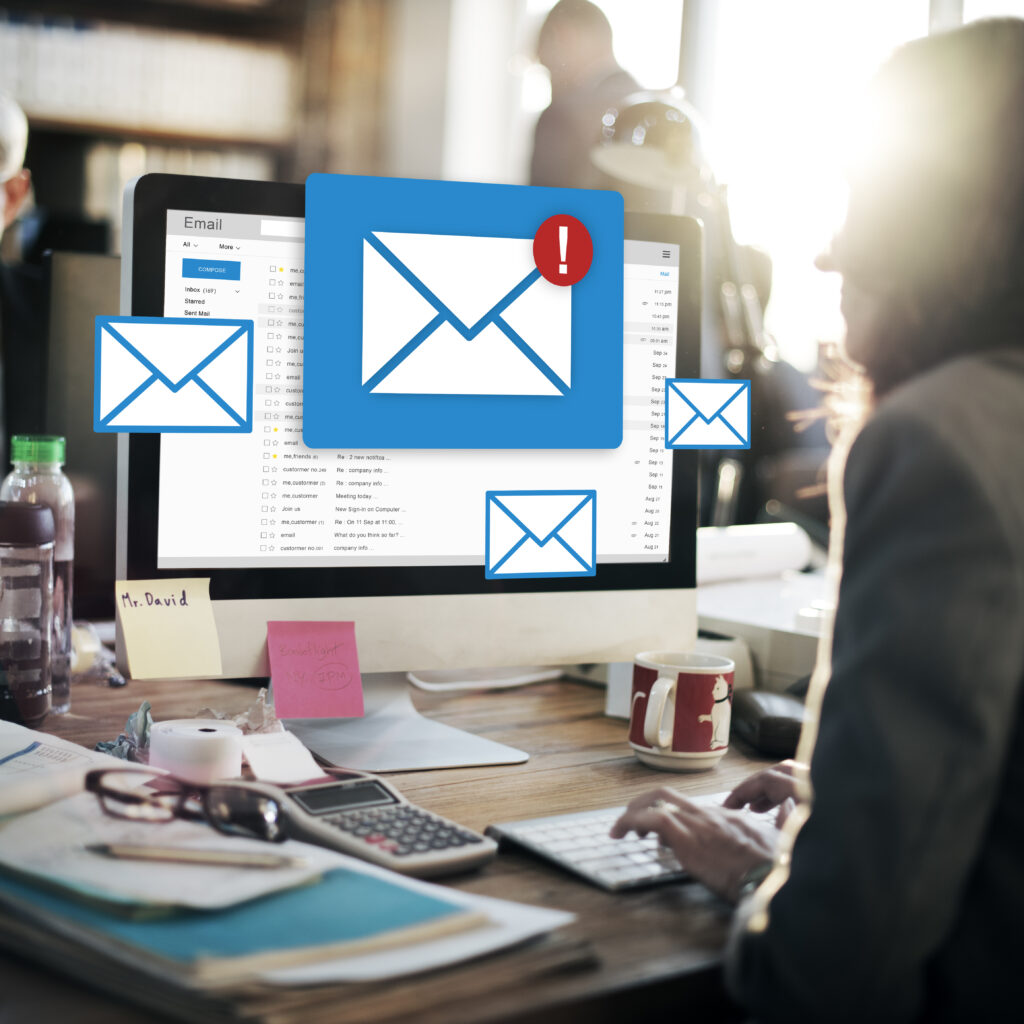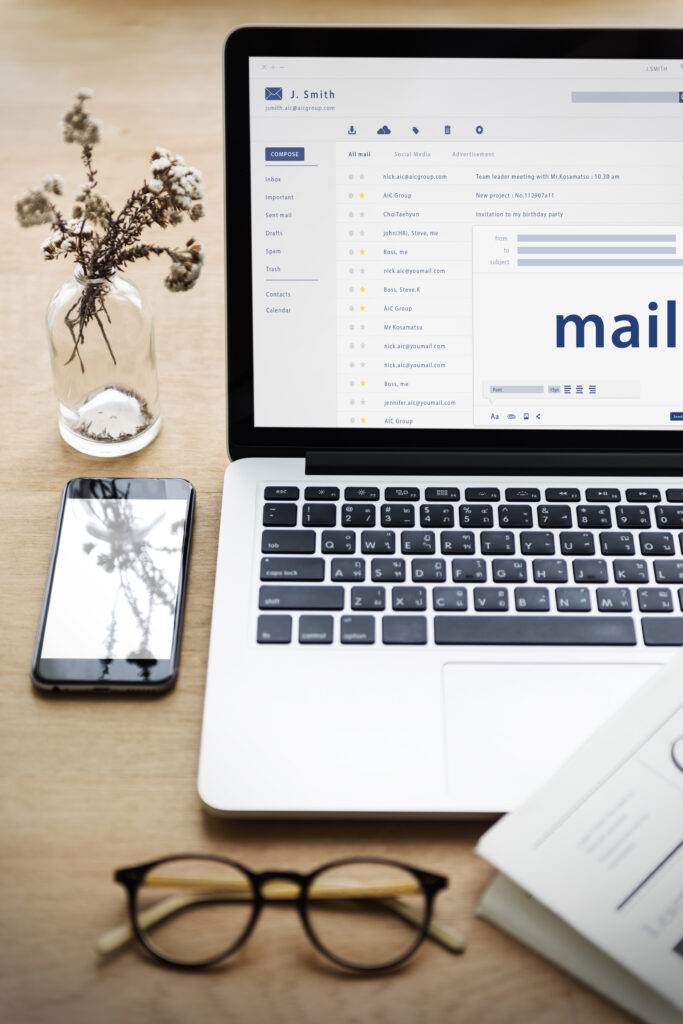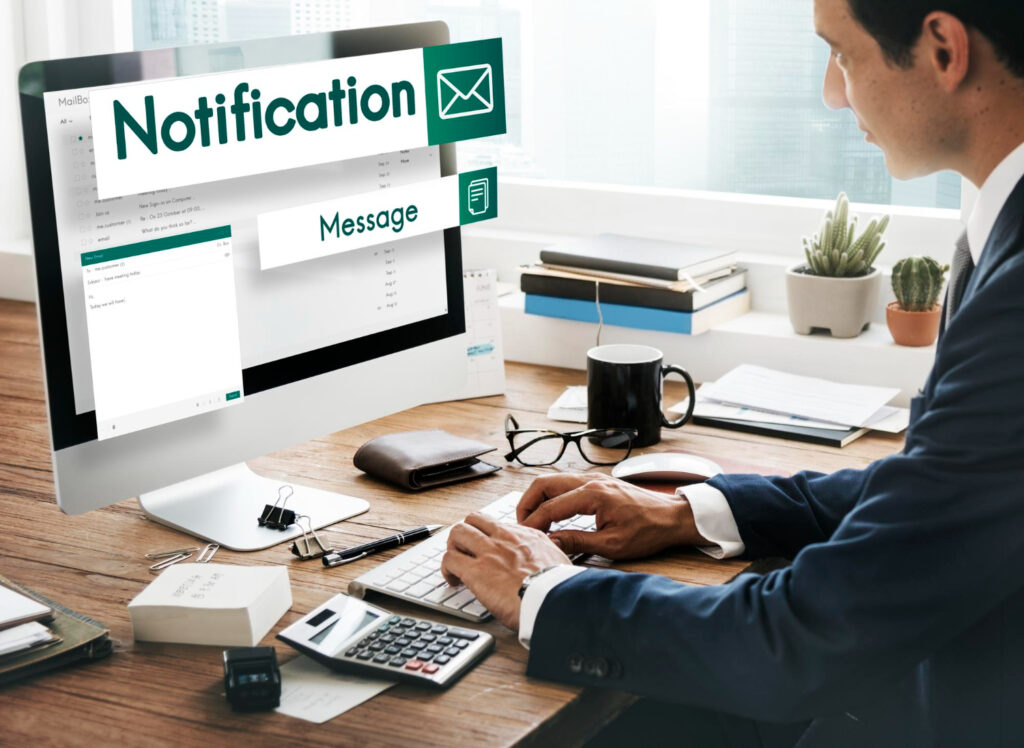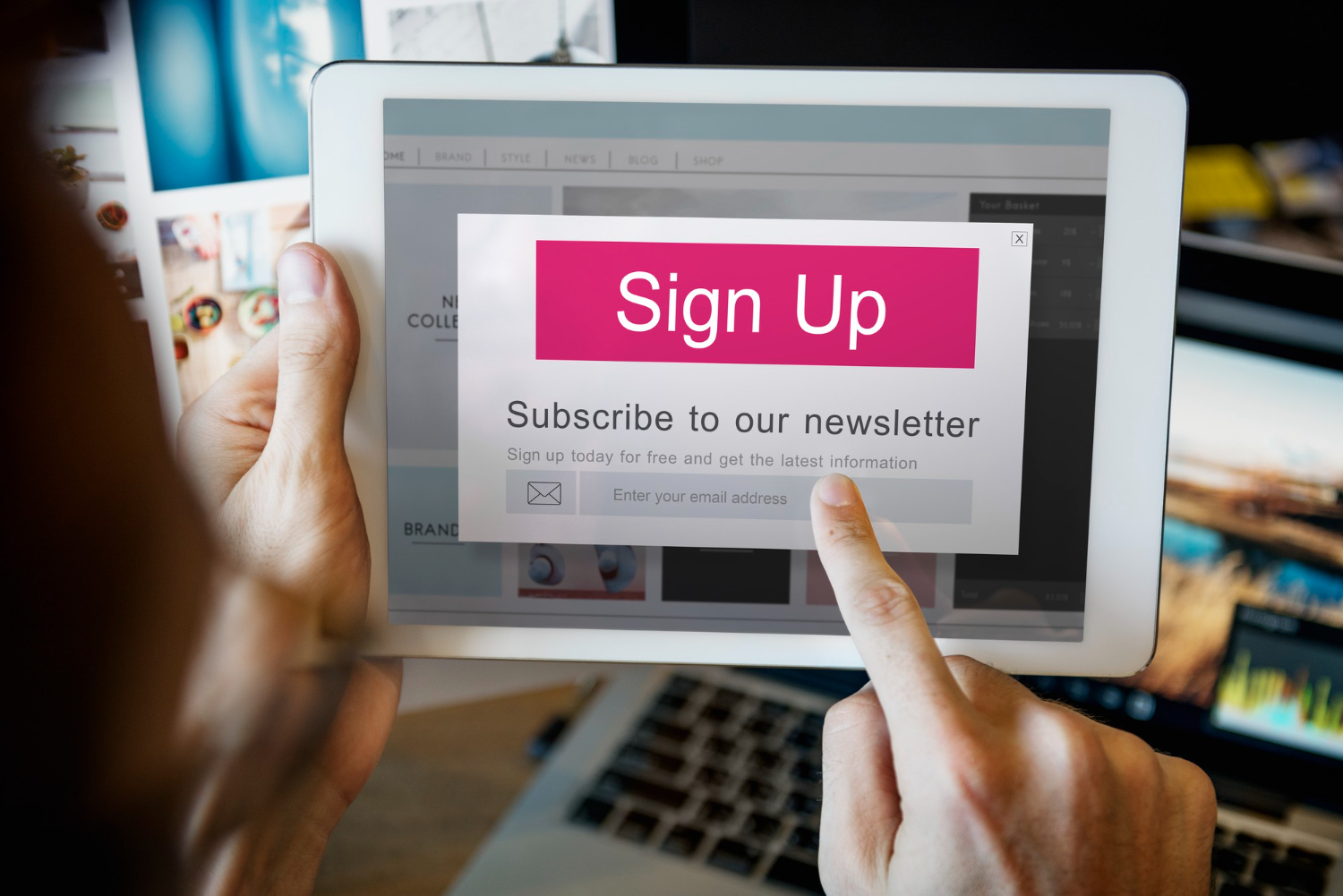26 Mar, 2024 • 14 min read
Email Newsletters Explained: Strategies and Best Practices

Email newsletters are a powerful tool in the world of digital marketing. They are emails sent out by businesses or individuals to a list of subscribers. These subscribers have usually signed up to receive updates, news, or other information related to the business or individual’s field of interest. Email newsletters are important because they keep your audience informed and engaged with your brand or services. By consistently providing valuable content, businesses can maintain a steady line of communication with their audience, which is crucial for building trust and loyalty.
Contents
- 1 Benefits for Your Business
- 2 Crafting Your Email Newsletter Strategy
- 3 Designing Your Email Newsletter
- 4 Best Practices for Email Newsletter Content
- 5 Measuring Email Newsletter Success
- 6 Email Newsletter Examples and Inspiration
- 7 Overcoming Challenges with Email Newsletters
- 8 Conclusion: The Future of Email Newsletters
- 9 FAQs
Benefits for Your Business
Utilizing email newsletters in your digital marketing strategy can significantly benefit your business. One of the main advantages is increased subscriber engagement. When subscribers receive regular, relevant updates directly in their inboxes, they are more likely to interact with your content. This interaction can lead to higher website traffic, improved customer retention, and ultimately, business growth. Moreover, email newsletters offer an impressive return on investment (ROI). They are cost-effective to produce and can generate substantial revenue by promoting products, services, or events directly to interested subscribers. In summary, email newsletters are an invaluable asset for any business looking to enhance its digital marketing efforts and achieve sustainable growth.

Crafting Your Email Newsletter Strategy
Creating an email newsletter is a fantastic way to connect with your audience and share valuable content. The journey begins with a few initial steps: setting clear goals, choosing the right platform, and understanding your audience. These steps lay the foundation for a successful email newsletter strategy.
Setting Goals
When you start planning your email newsletter strategy, the first thing to do is set your marketing goals. What do you want to achieve with your newsletter? Maybe you aim to increase traffic to your website, boost sales, or simply engage with your audience. Having clear goals helps guide the content and design of your newsletter, making it more effective in reaching your objectives.
Choosing a Platform
Once your goals are in place, the next step is selecting an email marketing platform. There are many options available, each with its own set of features. Look for platforms that offer audience segmentation capabilities. This means you can divide your subscribers into different groups based on their interests or behaviors, allowing you to tailor your messages more precisely. Choosing the right platform is crucial for managing your email campaigns efficiently.
Understanding Your Audience
The final step in crafting your email newsletter strategy is to understand your audience. Who are they? What do they like? What kind of information are they looking for? Conducting surveys or analyzing past interactions can give you insights into your audience’s preferences. Audience segmentation comes into play here as well, enabling you to customize your newsletters to meet the specific needs and interests of different groups within your audience.
Incorporating these steps into your strategy ensures that your email newsletter is well-planned and targeted, setting you up for better engagement with your subscribers.

Designing Your Email Newsletter
When you think about creating an email newsletter, you’re taking on a fun and creative project that can connect you with your audience. The key to a great newsletter is not just what you say, but how you present it. In this guide, we’ll explore some important aspects of newsletter design, content selection, and how to make your emails feel personal to your subscribers. By focusing on these elements, you can create newsletters that not only look great but also engage and captivate your audience.
Layout and Design
The layout and design of your newsletter are crucial for making a good first impression. It’s all about using design principles to make your newsletter easy and enjoyable to read. This means thinking about how you arrange your content, the colors you choose, and the fonts you use. A well-designed newsletter should be clean, organized, and reflective of your brand’s style. Remember, the goal is to make your newsletter something your subscribers look forward to opening, so keep it visually appealing and easy to navigate.
Content Selection
Content curation is the heart of your newsletter. It’s where you get to showcase the most interesting and relevant information to your audience. Whether it’s the latest news, helpful tips, or exclusive offers, the content you choose should be carefully selected to meet the interests and needs of your subscribers. Think of your newsletter as a curated collection of valuable insights and stories that provide real value to your readers. By selecting content that resonates with your audience, you can ensure your newsletter is always something they’re excited to see in their inbox.
Personalization Techniques
Subscriber personalization is the secret ingredient that can take your newsletter from good to great. It’s about making each subscriber feel like your newsletter is crafted just for them. This can be as simple as using their name in the greeting, or as complex as tailoring the content based on their interests or past behavior. Personalization shows your subscribers that you value and understand them, which can lead to higher engagement and loyalty. Implementing personalization techniques in your newsletter design can create a more meaningful connection with your audience and make your messages stand out in a crowded inbox.
Best Practices for Email Newsletter Content
Creating email newsletters that grab attention and engage your audience is crucial for any marketing strategy. To achieve this, focusing on certain best practices can significantly enhance your email newsletter’s effectiveness. These include writing compelling subject lines, ensuring the content is relevant to your audience, and incorporating effective calls-to-action (CTAs). By adhering to these guidelines, you can improve your email newsletters, making them a valuable tool in your marketing arsenal.
Crafting Subject Lines
Subject lines are the first thing your audience sees, and they play a pivotal role in determining whether your email gets opened. To maximize subject line effectiveness, it’s important to keep them short, intriguing, and to the point. A good subject line should spark curiosity or offer value, compelling the reader to open the email. Using actionable language or posing a question can also increase open rates. Remember, the goal is to stand out in a crowded inbox by being as clear and engaging as possible.
Ensuring Content Relevance
For your email newsletter to be truly effective, the content must be relevant and valuable to your audience. This means understanding your readers’ interests, needs, and challenges, and tailoring your content accordingly. Providing useful information, tips, or insights that resonate with your audience will not only keep them engaged but also build trust and credibility for your brand. Always aim to deliver content that adds value, whether it’s through educational articles, industry news, or exclusive offers.
Incorporating Calls-to-Action
A well-placed CTA is crucial for guiding your readers on what to do next. Whether it’s visiting your website, signing up for a webinar, or making a purchase, clear and concise CTA strategies can significantly increase your conversion rates. Ensure your CTAs are visually distinct and placed strategically throughout your email to grab attention. Using action-oriented language and creating a sense of urgency can also motivate your readers to take the desired action. Remember, every email should have a purpose, and your CTA is the key to achieving it.
By focusing on crafting engaging subject lines, ensuring content relevance, and incorporating effective calls to action, you can create email newsletters that not only capture your audience’s attention but also drive them to take action. Keep these best practices in mind to enhance your email marketing efforts and achieve better results.
Measuring Email Newsletter Success
When you send out email newsletters, you want to know how well they’re doing. To do this, you look at certain signs, or what we call performance indicators. These indicators tell us if people like our emails or if we need to make them better. Two big signs to watch are how many people open our emails (open rates) and how many people click on something inside the email (click-through rates). By looking at these, we can tell a lot about our newsletter’s success.
Key Performance Indicators
Performance indicators are like clues that tell us how good our email newsletters are. The most important ones are the open rates and click-through rates. Open rates show us how many people are opening our emails. It’s like seeing how many people come to your party. Click-through rates tell us how many people find something interesting enough in our email to click on it. It’s like seeing how many people dance at your party. Both of these indicators help us understand how well our email is doing.
Using Analytics for Improvement
Analytics tools are like our secret agents. They sneak around and gather all sorts of information about our email newsletters, like who opens them and who clicks on what. This info helps us make our emails even better. For example, if we see that a lot of people open our email but don’t click on anything, we might try to make our links more interesting or visible. Using analytics is all about learning from what we see and making improvements based on that.
Email Newsletter Examples and Inspiration
When looking for ways to improve your email marketing strategy, it’s incredibly helpful to study email newsletter examples from various industries. These examples not only showcase successful strategies but also serve as a source of inspiration for your own newsletters. By understanding what makes these newsletters effective, you can implement similar tactics to enhance your email marketing efforts.
Industry-Specific Examples
In the world of email newsletters, there are shining examples across different sectors that have managed to capture their audience’s attention effectively. Whether it’s the retail industry, tech sector, or non-profit organizations, each has its own set of best practices and success stories. These newsletters often stand out due to their engaging content, eye-catching design, and personalized approach, making them valuable benchmarks for anyone looking to elevate their email marketing game.
What Makes Them Effective
What sets these effective newsletters apart is not just their content, but also how they present it. Successful email newsletters often feature:
- Clear, Concise Messaging: They get straight to the point, making it easy for readers to understand the message.
- Visually Appealing Design: Attractive layouts and visuals that catch the reader’s eye.
- Personalization: Tailoring content to fit the interests and needs of the subscriber.
- Strong Call-to-Action: Encouraging readers to take the next step, whether it’s making a purchase, signing up for an event, or simply reading more about a topic.
By examining these industry inspiration and design inspiration examples, you can learn a great deal about what makes an email newsletter resonate with its audience. Whether it’s the way the content is structured, the design elements used, or how the message is personalized for each reader, there’s much to learn from these success stories.

Overcoming Challenges with Email Newsletters
Creating and sending email newsletters can sometimes feel like navigating a minefield. There are several hurdles to overcome, from managing subscriber lists to ensuring your emails don’t end up in the spam folder and keeping your audience engaged over time. Let’s explore some effective strategies to tackle these challenges head-on, ensuring your newsletters not only reach your audience but also captivate their interest.
Managing Subscriber Lists
Subscriber list management is crucial for the success of your email newsletters. It involves keeping track of who’s subscribing, and who’s leaving, and making sure your list is up to date. A clean and well-organized subscriber list enhances your ability to segment your audience. This means you can tailor your messages to suit different groups based on their preferences or behaviors, making your emails more relevant and engaging. Regularly cleaning your list also helps in removing inactive subscribers, ensuring your engagement rates remain high.
Avoiding Spam Filters
Spam avoidance is another significant challenge when it comes to email newsletters. To ensure your emails reach the inbox, it’s essential to understand spam regulations and comply with them. This includes getting permission from recipients before sending emails, avoiding misleading subject lines, and including a clear unsubscribe option. Additionally, keeping your email design simple and avoiding the overuse of sales language can help prevent your newsletters from being flagged as spam. By respecting your subscribers’ inboxes and adhering to best practices, you can improve your email deliverability.
Maintaining Subscriber Interest
Subscriber retention is all about keeping your audience engaged and interested in your content over time. This requires a mix of content freshness and relevance. Your newsletters should offer value, whether through informative content, entertainment, or exclusive offers. Experiment with different types of content and formats to see what resonates best with your audience. Additionally, soliciting feedback from your subscribers can provide valuable insights into their preferences and help you tailor your content strategy to meet their needs. Keeping your newsletters fresh and relevant is key to maintaining a loyal subscriber base.
By addressing these common challenges with strategic planning and a focus on subscriber needs, you can create effective and engaging email newsletters. Remember, the goal is not just to reach your audience but to create a meaningful connection that encourages continued engagement.
Conclusion: The Future of Email Newsletters
In this guide, we’ve explored the essential elements of crafting compelling email newsletters. As we look ahead, future trends such as email newsletter automation, AI personalization, and interactive content are set to redefine how we engage with our audience. These advancements promise to make newsletters more relevant and engaging, ensuring that each subscriber gets content that resonates with their individual preferences. By embracing these technologies, content creators can ensure their newsletters remain an indispensable part of their audience’s inbox.
FAQs
1. What is an email newsletter?
An email newsletter is a kind of email sent out by businesses or individuals to a list of subscribers. These subscribers have signed up because they are interested in staying updated with news, tips, or promotions from the sender. The main goal of an email newsletter is to keep the audience engaged with the sender over time, providing them with valuable information or entertainment. It’s like receiving a regular update from someone you’re interested in hearing from, directly in your inbox.
2. How do I design an effective email newsletter?
Designing an effective email newsletter means making it visually appealing and easy to read. First, choose a clean layout that makes your content stand out. Use headings and bullet points to break up text, making it easier for your readers to scan through. Including images can add visual interest, but they should be relevant to your content. Also, make sure your newsletter is mobile-friendly, as many people will be reading it on their phones. Lastly, a clear call-to-action (CTA) is crucial, telling your readers exactly what you want them to do next, whether it’s visiting a website or making a purchase.
3. What content should I include in my email newsletter?
The content of your email newsletter should be interesting and relevant to your audience. Here are a few ideas:
- Updates about your business or products
- Helpful tips or how-to guides related to your industry
- Upcoming events or webinars
- Special promotions or discounts
- Engaging stories or case studies Remember, the key is to provide value to your subscribers, making them look forward to each of your newsletters.
4. How can I measure the success of my email newsletter?
Measuring the success of your email newsletter can be done by looking at several key metrics:
- Open rate: The percentage of recipients who opened your email
- Click-through rate (CTR): The percentage of readers who clicked on at least one link within your email
- Conversion rate: The percentage of readers who took a desired action, like making a purchase
- Unsubscribe rate: The percentage of readers who opted out of receiving future emails Analyzing these metrics can help you understand what works and what doesn’t, allowing you to make necessary adjustments to improve future newsletters.
5. What are the future trends in email newsletters?
The future trends in email newsletters point towards more personalization and interactivity. This means newsletters will likely become more tailored to individual preferences, using data to segment audiences and deliver more relevant content. Interactive elements like polls, surveys, and videos are becoming more common, making newsletters more engaging. Additionally, the use of artificial intelligence (AI) to automate and optimize email campaigns is on the rise, promising to make newsletters even more effective in reaching and engaging subscribers.

Ankur
Ankur, with over 20 years of expertise, simplifies the complex world of online marketing to boost your conversion rates. He shares actionable insights that anyone can apply to see immediate results. Trust Ankur to guide you through proven strategies that enhance your online presence and profitability.
Related Blogs

By Ankur • 10 min read
Newsletters: Strategies, Tips, and Trends for Effective Communication
A newsletter is a type of publication that's usually sent regularly to a group of people. It's a powerful tool for staying in touch directly...

By Ankur • 4 min read
The Ultimate Guide to Build Email Newsletter
Are you looking to supercharge your digital marketing strategy? Look no further than the power of newsletters. In this ultimate guide, we will delve into...
Metrics
Conversion
